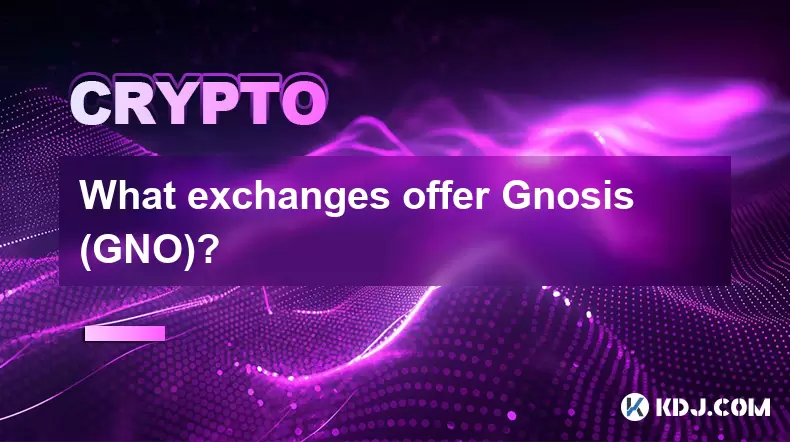-
 Bitcoin
Bitcoin $119000
-2.21% -
 Ethereum
Ethereum $4315
1.01% -
 XRP
XRP $3.151
-3.11% -
 Tether USDt
Tether USDt $0.0000
0.00% -
 BNB
BNB $808.5
-0.71% -
 Solana
Solana $175.8
-4.21% -
 USDC
USDC $0.9999
0.00% -
 Dogecoin
Dogecoin $0.2250
-3.92% -
 TRON
TRON $0.3469
1.77% -
 Cardano
Cardano $0.7818
-3.81% -
 Chainlink
Chainlink $21.47
-2.10% -
 Hyperliquid
Hyperliquid $43.30
-6.81% -
 Stellar
Stellar $0.4370
-2.84% -
 Sui
Sui $3.682
-4.40% -
 Bitcoin Cash
Bitcoin Cash $590.8
2.67% -
 Hedera
Hedera $0.2484
-5.20% -
 Ethena USDe
Ethena USDe $1.001
0.00% -
 Avalanche
Avalanche $23.10
-4.29% -
 Litecoin
Litecoin $119.2
-3.96% -
 Toncoin
Toncoin $3.409
0.90% -
 UNUS SED LEO
UNUS SED LEO $9.016
-1.29% -
 Shiba Inu
Shiba Inu $0.00001304
-3.82% -
 Uniswap
Uniswap $11.18
1.33% -
 Polkadot
Polkadot $3.913
-3.51% -
 Cronos
Cronos $0.1672
-3.08% -
 Dai
Dai $1.000
0.02% -
 Ethena
Ethena $0.7899
-4.70% -
 Bitget Token
Bitget Token $4.400
-1.23% -
 Pepe
Pepe $0.00001132
-5.93% -
 Monero
Monero $257.9
-6.44%
How to enable Ethereum smart trading? What is the safest way to configure automatic buying and selling strategies?
Enabling Ethereum smart trading involves setting up automated strategies on platforms like Binance or Kraken, using bots like 3Commas, and ensuring safety with strong API security and 2FA.
May 19, 2025 at 09:21 pm

Enabling Ethereum smart trading involves setting up automated trading strategies that can execute buy and sell orders based on predefined conditions. This process can be both exciting and challenging, especially when aiming to do so safely. In this article, we will explore the steps to enable Ethereum smart trading and the safest methods to configure automatic buying and selling strategies.
Understanding Ethereum Smart Trading
Ethereum smart trading refers to the use of automated systems to trade Ethereum based on algorithms and predefined rules. These systems can analyze market trends, execute trades, and manage portfolios without human intervention. This automation can help traders capitalize on opportunities 24/7, which is particularly beneficial in the volatile cryptocurrency market.
To start with smart trading, you need to understand the basic components involved:
- Trading Bots: Software that executes trades based on algorithms.
- Exchanges: Platforms where you can trade Ethereum and other cryptocurrencies.
- APIs: Application Programming Interfaces that allow bots to interact with exchanges.
- Trading Strategies: Rules and conditions that dictate when to buy or sell.
Choosing the Right Trading Platform
The first step in enabling Ethereum smart trading is selecting a reliable trading platform. Some popular platforms that support automated trading include:
- Binance: Known for its robust API and extensive trading features.
- Kraken: Offers advanced trading options and a secure API.
- Coinbase Pro: Provides a user-friendly interface with API access.
When choosing a platform, consider the following factors:
- Security: Ensure the platform has strong security measures in place.
- API Support: Check if the platform offers a comprehensive API that can be used with trading bots.
- Fees: Look for competitive trading fees that won't eat into your profits.
- User Experience: Choose a platform that is easy to navigate and use.
Setting Up Your Trading Bot
Once you have selected a trading platform, the next step is to set up your trading bot. Here's how you can do it:
- Select a Trading Bot: Popular options include 3Commas, Cryptohopper, and HaasOnline. Each bot has its own features and pricing, so choose one that aligns with your trading goals.
- Connect the Bot to Your Exchange: Use the API keys provided by your exchange to link it with your trading bot. This allows the bot to execute trades on your behalf.
- Configure Your Trading Strategy: Define the rules and conditions for buying and selling Ethereum. This can include setting stop-loss orders, take-profit levels, and other parameters.
Configuring Automatic Buying and Selling Strategies
To safely configure automatic buying and selling strategies, follow these steps:
- Define Your Risk Tolerance: Determine how much risk you are willing to take. This will help you set appropriate stop-loss and take-profit levels.
- Set Clear Entry and Exit Points: Decide at what price points you want to buy and sell Ethereum. This can be based on technical indicators, market trends, or other factors.
- Use Stop-Loss Orders: A stop-loss order automatically sells your Ethereum if the price drops to a certain level, helping to limit potential losses.
- Implement Take-Profit Orders: A take-profit order automatically sells your Ethereum if the price reaches a certain level, ensuring you lock in profits.
- Backtest Your Strategy: Before going live, use historical data to test your strategy. This helps you understand how it would have performed in the past.
- Monitor and Adjust: Continuously monitor your trading bot's performance and make adjustments as needed. The market is dynamic, and what works today may not work tomorrow.
Ensuring Safety in Automated Trading
Safety is paramount when setting up automated trading systems. Here are some best practices to ensure your trading activities are secure:
- Use Strong API Security: When connecting your trading bot to an exchange, use strong API keys with limited permissions. Only grant the bot access to the functions it needs to execute trades.
- Enable Two-Factor Authentication (2FA): Always enable 2FA on your exchange and trading bot accounts to add an extra layer of security.
- Regularly Update Software: Keep your trading bot and exchange software up to date to protect against vulnerabilities.
- Monitor for Suspicious Activity: Regularly check for any unauthorized access or unusual activity on your accounts.
- Use Cold Storage: For long-term holdings, consider storing your Ethereum in a cold wallet, which is not connected to the internet and thus more secure.
Managing Your Trading Portfolio
Effective portfolio management is crucial for successful Ethereum smart trading. Here are some tips to manage your trading portfolio:
- Diversify Your Investments: Don't put all your funds into Ethereum. Consider diversifying across different cryptocurrencies to spread risk.
- Rebalance Regularly: Periodically review and adjust your portfolio to maintain your desired asset allocation.
- Keep Some Liquidity: Always have some funds in a liquid state to take advantage of new trading opportunities or to cover unexpected expenses.
- Track Your Performance: Use trading journals or software to track your trades and analyze your performance over time. This can help you refine your strategies.
Frequently Asked Questions
Q: Can I use multiple trading bots simultaneously?
A: Yes, you can use multiple trading bots at the same time, but it's important to manage them carefully to avoid conflicting trades. Ensure each bot has a clear role and that you monitor their performance regularly.
Q: How much capital do I need to start with Ethereum smart trading?
A: The amount of capital needed can vary based on your trading strategy and risk tolerance. It's advisable to start with an amount you can afford to lose, as trading involves significant risks.
Q: Are there any legal considerations I should be aware of when using trading bots?
A: Yes, it's important to check the legal regulations in your country regarding automated trading and cryptocurrency. Some jurisdictions have specific rules or restrictions that you need to comply with.
Q: Can I run a trading bot on my personal computer?
A: Yes, you can run a trading bot on your personal computer, but it's generally more reliable to use cloud-based services that can run 24/7 without interruption. Ensure your computer has the necessary resources and is secure if you choose to run a bot locally.
Disclaimer:info@kdj.com
The information provided is not trading advice. kdj.com does not assume any responsibility for any investments made based on the information provided in this article. Cryptocurrencies are highly volatile and it is highly recommended that you invest with caution after thorough research!
If you believe that the content used on this website infringes your copyright, please contact us immediately (info@kdj.com) and we will delete it promptly.
- Arc Blockchain: Circle's Layer-1 Play Amidst $428 Million Loss
- 2025-08-12 20:30:13
- XRP Price: Riding the Bull Cycle Wave or Hitting a Wall?
- 2025-08-12 20:50:12
- Cloud Mining in 2025: Chasing Passive Income and High Returns
- 2025-08-12 20:30:13
- Solana Price, Meme Coins, and 100x Gains: What's the Hype?
- 2025-08-12 20:50:12
- Japan, Bitcoin, and Treasuries: A New Era of Corporate Finance?
- 2025-08-12 18:30:12
- Bitcoin Bull Market: Decoding the Indicators for the Next Big Move
- 2025-08-12 18:30:12
Related knowledge

How to purchase Aragon (ANT)?
Aug 09,2025 at 11:56pm
Understanding Aragon (ANT) and Its PurposeAragon (ANT) is a decentralized governance token that powers the Aragon Network, a platform built on the Eth...

Where to trade Band Protocol (BAND)?
Aug 10,2025 at 11:36pm
Understanding the Role of Private Keys in Cryptocurrency WalletsIn the world of cryptocurrency, a private key is one of the most critical components o...

What is the most secure way to buy Ocean Protocol (OCEAN)?
Aug 10,2025 at 01:01pm
Understanding Ocean Protocol (OCEAN) and Its EcosystemOcean Protocol (OCEAN) is a decentralized data exchange platform built on blockchain technology,...

How to invest in Kyber Network Crystal v2 (KNC)?
Aug 12,2025 at 05:21pm
Understanding Kyber Network Crystal v2 (KNC)Kyber Network is a decentralized liquidity hub built on the Ethereum blockchain that enables instant token...

Where can I buy UMA (UMA)?
Aug 07,2025 at 06:42pm
Understanding UMA and Its Role in Decentralized FinanceUMA (Universal Market Access) is an Ethereum-based decentralized finance (DeFi) protocol design...

What exchanges offer Gnosis (GNO)?
Aug 12,2025 at 12:42pm
Overview of Gnosis (GNO) and Its Role in the Crypto EcosystemGnosis (GNO) is a decentralized prediction market platform built on the Ethereum blockcha...

How to purchase Aragon (ANT)?
Aug 09,2025 at 11:56pm
Understanding Aragon (ANT) and Its PurposeAragon (ANT) is a decentralized governance token that powers the Aragon Network, a platform built on the Eth...

Where to trade Band Protocol (BAND)?
Aug 10,2025 at 11:36pm
Understanding the Role of Private Keys in Cryptocurrency WalletsIn the world of cryptocurrency, a private key is one of the most critical components o...

What is the most secure way to buy Ocean Protocol (OCEAN)?
Aug 10,2025 at 01:01pm
Understanding Ocean Protocol (OCEAN) and Its EcosystemOcean Protocol (OCEAN) is a decentralized data exchange platform built on blockchain technology,...

How to invest in Kyber Network Crystal v2 (KNC)?
Aug 12,2025 at 05:21pm
Understanding Kyber Network Crystal v2 (KNC)Kyber Network is a decentralized liquidity hub built on the Ethereum blockchain that enables instant token...

Where can I buy UMA (UMA)?
Aug 07,2025 at 06:42pm
Understanding UMA and Its Role in Decentralized FinanceUMA (Universal Market Access) is an Ethereum-based decentralized finance (DeFi) protocol design...

What exchanges offer Gnosis (GNO)?
Aug 12,2025 at 12:42pm
Overview of Gnosis (GNO) and Its Role in the Crypto EcosystemGnosis (GNO) is a decentralized prediction market platform built on the Ethereum blockcha...
See all articles

























































































